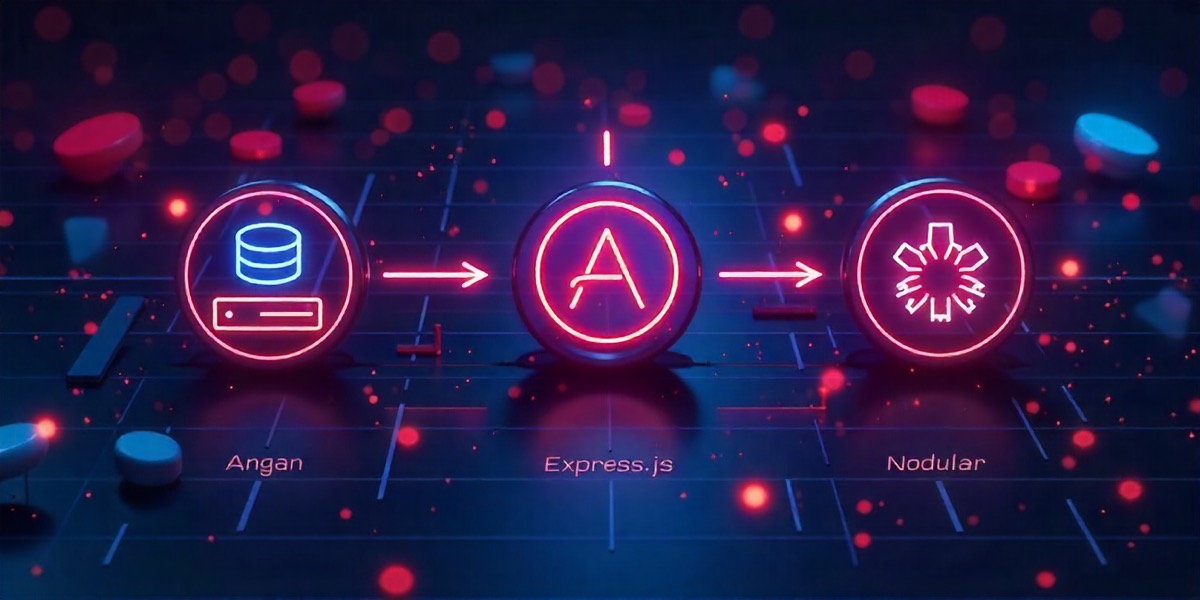The MEAN stack (MongoDB, Express.js, Angular, and Node.js) has become a preferred framework for building RESTful APIs that are scalable, efficient, and highly maintainable.
By leveraging JavaScript across the complete development pipeline, this architecture minimizes complexity and accelerates deployment cycles. As a MEAN stack development company planning to scale its operations, you need to adapt this stack to deliver robust backend services with consistent performance.
This guide outlines the complete process of building RESTful APIs with the MEAN stack, offering practical steps and best practices. Whether used in enterprise-grade systems or agile startups, the MEAN stack presents a cohesive ecosystem that empowers developers to work more efficiently and effectively.
Why the MEAN Stack Is Ideal for RESTful APIs
The MEAN stack provides a seamless JavaScript experience, spanning from the client interface to the database. This continuity enables better code reuse, faster debugging, and smoother integration of new features. A MEAN stack development company typically relies on this stack for its modular structure and rapid development capabilities.
Each layer plays a critical role:
- MongoDB handles document-based data efficiently, ideal for JSON payloads.
- Express.js provides lightweight, high-performance routing.
- Angular delivers responsive frontend interfaces.
- Node.js powers the server with non-blocking, asynchronous processing.
Together, they form an efficient toolkit for designing and deploying RESTful APIs.
Different Elements of RESTful API & MEAN Stack You Need to Know
API Designing
Begin by specifying the resources that our API will control. Resources are the entities that the API will manage, such as users, goods, or orders.
Create unambiguous and consistent URIs for these resources that use nouns and avoid verbs. Planning how clients will interact with these resources via HTTP methods is critical. Use suitable status codes to communicate the outcomes of API queries. When consulting with a software development company like Brainvire, they will suggest API design for streamlined operations.
API Endpoint Implementation
The second step is to choose a framework/platform that is compatible with our development environment, such as Express.js for Node.js, Flask for Python, or Spring Boot for Java.
We must construct API endpoints based on the design, which includes designing routes to handle client requests and communicate with your data models. Ensure that each endpoint serves its intended purpose, whether retrieving, generating, updating, or removing resources.
Testing and Validating API
Testing is a necessary step to ensure that our API performs properly and handles edge circumstances. Using manual testing tools such as Postman to replicate client queries and validate responses.
To validate the API’s functionality and performance, use automated testing tools such as Mocha for Node.js and pytest for Python. Address any flaws or faults that surface during testing to improve dependability.
API Documentation
Comprehensive documentation is required for developers who will use your API. Provide explicit instructions for interacting with the API, including endpoints, request types, and response structures.
Swagger (OpenAPI) is a tool that can automatically produce interactive documentation, making it easier for users to understand and use your API.
Secure and Deploy Your API
Set up security measures to safeguard your API and data. To prevent misuse, this involves enabling authentication (such as OAuth or JWT), rate limiting, and authorization.
Once your API is safe, deploy it to a production environment using cloud services such as AWS, Google Cloud, or Azure. Ensure your deployment strategy includes logging and monitoring to track API performance and use.
Maintaining and Iterating
After deployment, continue to monitor your API’s performance and use. To create changes, collect feedback, monitor errors, and evaluate usage trends. Regularly update your API to meet new needs, address issues, and enhance functionality, ensuring it remains efficient and relevant over time.
Following these steps allows full-stack developers to create scalable and effective RESTful APIs that serve as the foundation for complex online applications.
Real-World Use Cases and Industry Adoption
RESTful APIs built with the MEAN stack have gained widespread adoption across various industries, including e-commerce, healthcare, education, and logistics. The unified JavaScript environment not only accelerates development but also reduces long-term maintenance costs, making it an attractive option for both startups and large enterprises.
For example, in e-learning platforms, RESTful APIs manage user authentication, course delivery, and performance tracking. In retail applications, they power inventory updates, cart management, and payment integrations. Companies often partner with a specialized MEAN stack development company to ensure the system is not only fast but also scalable and secure.
Leading software development company Brainvire has implemented MEAN stack solutions for complex client requirements, including CRM platforms, real-time dashboards, and multi-tenant SaaS applications. With its asynchronous, event-driven architecture, Node.js efficiently handles high volumes of I/O operations, while MongoDB provides a flexible schema that is ideal for fast-changing data models.
This makes the MEAN stack a strong foundation for building RESTful APIs that meet today’s demands for speed, scalability, and reliability.
Conclusion
Developing RESTful APIs with the MEAN stack offers unmatched flexibility and performance through a unified JavaScript environment. By adhering to structured development practices, modular code, validation, security, deployment, and monitoring, teams can build scalable APIs suitable for modern enterprise applications.
Organizations seeking rapid development cycles and efficient delivery often rely on a specialized MEAN stack development company to architect these systems. With the exemplary architecture and tools in place, MEAN stack APIs provide both speed and stability, two critical assets in today’s software ecosystem.


